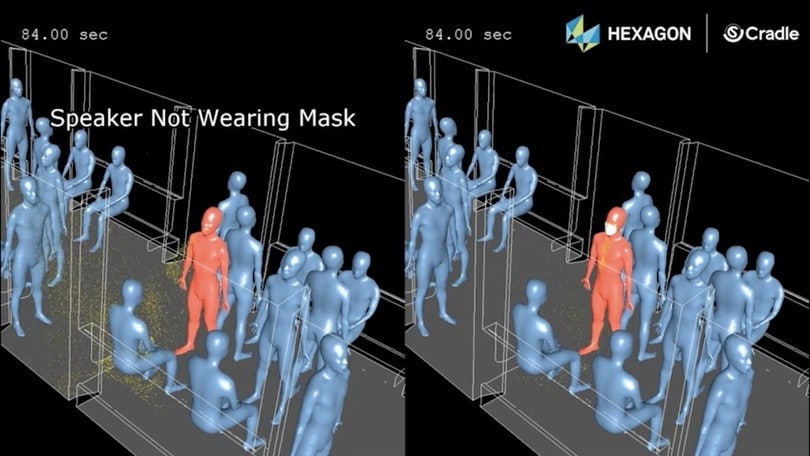MSC Software has developed a 3D simulation of the risks of coronavirus infection in a subway wagon with and without mask.
There are questions gripping commuters around the world after the end of the Coronavirus lockdown. Is it safe to travel by public transport? What are the risks of infection on board a bus or in a subway wagon? The answer comes from science. MSC Software – an American company specializing in data processing and three-dimensional rendering – has created a simulation that shows the propagation of the coronavirus inside a subway wagon. The study was coordinated by a team of virologists and researchers from the University of Leicester. The simulation is very accurate and compares the risks with or without the mask. Of course, the probability of infection is much higher when users do not wear the mask.
Coronavirus: the risks in the subway
The author of the research – the virologist Julian Tang of the University of Leicester – argues that “the droplets produced when speaking do not reach the distance of those that come out when coughing or sneezing. But they are still dangerous and can run over people sitting in front of us if we don’t wear a mask”. This is not the first time that a simulation of the risks of coronavirus infection has been developed. Last month, researchers at Aalto University, Finnish Meteorological Institute, VTT Technical Research Centre of Finland and University of Helsinki simulated the spread of aerosol particles emitted after coughing. The environment in the model is an enclosed space, similar to the aisles between the shelves of a supermarket. Groups from Aalto University, VTT Technical Research Centre of Finland and Finnish Meteorological Institute conducted independent studies. The preliminary results are the same in the three cases, which gives great value to the truthfulness of the research. The simulation shows that the cloud expelled from the mouth remains in the immediate vicinity of the sick person and disperses in the following minutes. However, the process takes several minutes. The results suggest that the expelled virus can remain in suspension in the air even after the patient has left.
